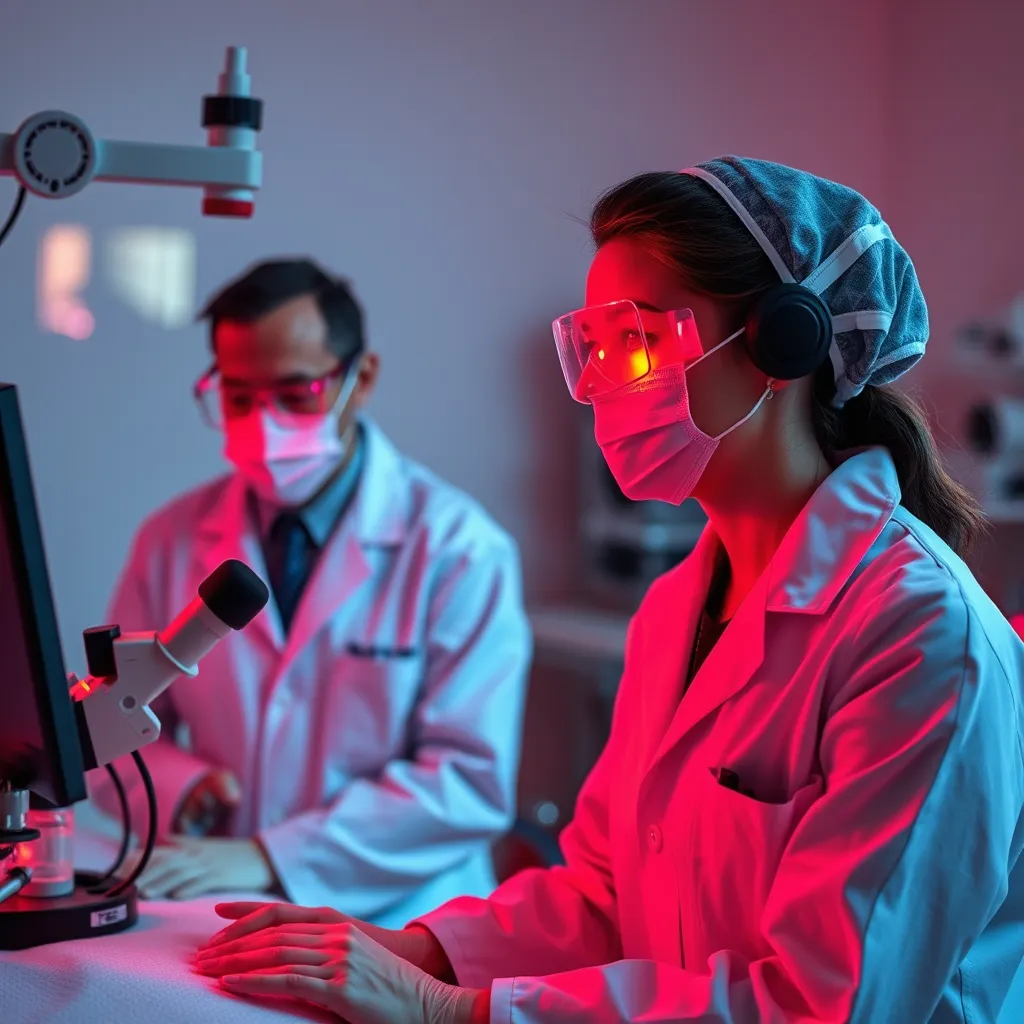The Science Behind Red Light Therapy

How Red Light Therapy Works
Red light therapy, also known as low-level light therapy (LLLT) or photobiomodulation, uses specific wavelengths of red and near-infrared light to stimulate cellular processes in the body.
The primary mechanism of action involves the absorption of light by mitochondria, the powerhouses of our cells. This absorption increases the production of adenosine triphosphate (ATP), the energy currency of cells, leading to improved cellular function and repair.
Key Wavelengths
- Red light (630-660 nm): Primarily affects the skin's surface
- Near-infrared light (810-850 nm): Penetrates deeper into tissues
Scientific Research and Evidence
Numerous studies have demonstrated the efficacy of red light therapy in various applications, including skincare and beauty treatments.
Key Findings
- Increased collagen production, leading to reduced wrinkles and fine lines
- Improved skin tone and texture
- Reduced inflammation and redness in skin conditions like rosacea
- Accelerated wound healing and tissue repair
- Stimulation of hair growth in cases of androgenetic alopecia
A 2014 study published in Photomedicine and Laser Surgery found that red light therapy improved skin complexion and feeling of skin softness, smoothness, and firmness in a group of 136 participants.

Benefits for Beauty Applications
Skin Rejuvenation
Red light therapy stimulates collagen and elastin production, which are essential for maintaining youthful, firm skin. This leads to a reduction in the appearance of fine lines, wrinkles, and age spots.
Acne Treatment
The anti-inflammatory properties of red light therapy can help reduce acne breakouts and associated redness. It may also help regulate sebum production, leading to clearer skin.
Wound Healing
By stimulating cellular energy production and increasing blood flow, red light therapy can accelerate the healing of cuts, burns, and other skin injuries, potentially reducing scarring.
Hair Growth
Some studies suggest that red light therapy can stimulate hair follicles, potentially leading to improved hair growth and thickness in individuals with androgenetic alopecia.
Safety and Considerations
Red light therapy is generally considered safe with minimal side effects. However, it's important to follow manufacturer guidelines and consult with a healthcare professional before starting any new treatment regimen, especially if you have pre-existing skin conditions or are taking photosensitizing medications.
While red light therapy shows promising results in various beauty applications, individual results may vary. Consistent use over time is typically necessary to see significant improvements.